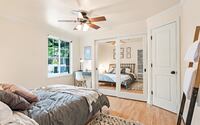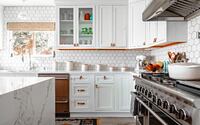Tips for Lighting Up Your Kitchen
When installing a kitchen in a new home or remodeling this zone in an established property, most people spend much of their time concentrating on things like benchtops, cabinetry, tiles, ovens, dishwashers, and fridges.
However, something not a lot of homeowners think enough about is lighting. The addition of enough light, created in suitable ways, can make or break this space when it comes to the area’s look and functionality. Consider the below tips when designing your ultimate kitchen this year.

Add Layers of Light
One fixture won’t provide all the light you want for your kitchen. It’s essential to add layers of light to the room to get the illumination required and cut down on glare. You can install a solid overhead light solution, such as track lighting, plus smaller devices in different areas for different needs.
There are three main types of light to put in your kitchen. Ambient lighting is the soft overhead option that gives a warm glow to the room. Use it to illuminate the space generally, so you can easily move around and see the main things you need.
For instance, you could choose a ceiling fan with lights or an elegant centerpiece such as a classic chandelier or a big, bold modern piece. Also helpful are recessed lights with dimmer switches. They can be used at full wattage to shed light on the food prep station, stove, or kitchen sink, for example, but also dimmed down to give you ambiance when you want it.

Task lighting is the type you use to give you adequate illumination when completing jobs in the kitchen like chopping food, reading recipes, stirring things, and cleaning. It needs to be bright enough to illuminate countertops, appliances, and the kitchen sink and island.
The third type of lighting you want to include is accent lighting. In between the previous two as far as brightness goes, these products highlight something you want to draw attention to in the room. Accent kitchen lighting helps you bring more depth to a space. Use accent lights, for instance, to bring awareness to a collection of fine china, a striking artwork, an elaborate ceiling or other architectural feature, and more.
Using a layered lighting approach will ensure you have enough illumination in the areas you require it, at the appropriate times. Plus, adding multiple globes helps minimize shadows, which people often have if they rely on only overhead lighting.
Consider the Different Tasks You Must Complete in the Space
Before choosing lights for your kitchen, take the time to consider the various tasks you’ll need to do in the room. Apart from the obvious jobs, you may also want the right lighting for polishing silverware, when you have children who do their homework at the kitchen island while you cook dinner, or to set the scene for a romantic meal.
Follow the Rule of Threes
In interior design, people often talk about the essential “rule of threes.” This term refers to the idea that when items are arranged in odd numbers, such as three, they’re more visually appealing to us. Although this guideline works for groupings of five, seven, or more pieces, three seems to be the best number for many spaces and types of fixtures, fittings, furniture pieces, and the like.
As you search for lights for your kitchen, it pays to follow this rule and purchase three matching hanging pendant fixtures for the center of the kitchen or even three or five recessed lights. Your choice will, of course, come down to the amount of space in the room and the amount of illumination required.
Add Motion-Sensor Lights
Most kitchens have one or more areas that always seem to be dark and hard to peer into. Frequently this occurs at the back of the pantry or the far corners of a cabinet. If you have this situation in your kitchen, you might like to add some motion-sensor lights to combat the issue.

Set up the fixtures to activate any time that a door is opened. This way, you get the light you need when you need it but don’t have to worry about wasted power at other times.
The kitchen is one of the most important rooms in a whole house, so you need to do everything you can to make this zone as functional and appealing as possible. Lighting is a big part of this. Take your time, then, finding the right products and positioning them in the best possible locations.
Photography by Kara Eads and Creatv Eight
- by Matt Watts

